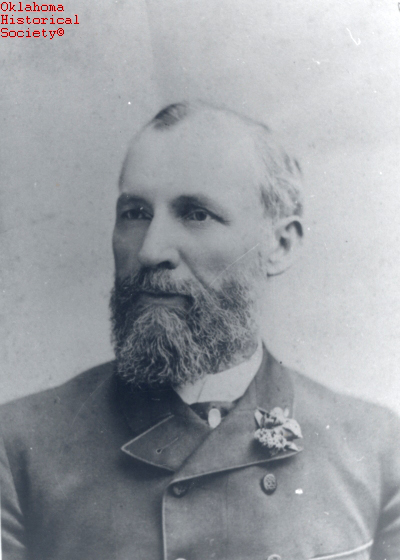
The Encyclopedia of Oklahoma History and Culture
SPRINGER, WILLIAM McKENDREE (1836–1903).
An attorney and a judge of the United States Court for the Indian Territory, William McKendree Springer was born on May 30, 1836, in Sullivan County, Indiana. Educated in the common schools of Indiana and Illinois, where the family moved before Springer reached his teens, Springer attended Illinois College at Jacksonville, Illinois. His college education at that institution ended in an early instance of political correctness when he refused to omit a defense of Sen. Stephen A. Douglas and the Kansas-Nebraska bill from an oration. Later, Springer earned the master of arts degree from Indiana State University.
Returning to Illinois, Springer worked as a journalist, read law, and engaged in Democratic politics. Admitted to the bar in 1861, he practiced in Springfield. Springer was not one to shy away from controversy. He had refused to pay certain taxes levied during the Civil War, believing them unconstitutional. The family home was sold to satisfy the debt. The case went all the way to the United States Supreme Court, where Springer lost (Springer v. United States, 102 U.S. 586, 25 L.Ed. 253 [(1881]).
In 1872 he was elected to the Illinois Assembly and then in 1874 to the U.S. House of Representatives. While representing Illinois in Congress, Springer helped engineer the opening of the Unassigned Lands of Indian Territory. He prepared a rider to the Indian Appropriations Act of 1890, an amendment authorizing the president to issue a proclamation opening the settlement process. It became law in March 1889. He became a powerful member of the House, serving at times on the ways and means, territories, and banking and currency committees. Springer's tenure in Congress ended in 1895 after ten terms. The split between the gold and silver wings of the Democratic Party spelled his defeat at the polls.
In 1895 Pres. Grover Cleveland appointed two former Democratic members of Congress to the newly created positions on the United States Court for the Indian Territory. The United States Court for the Indian Territory initially had been a single-judge bench. In 1895 Congress divided the territory into three judicial districts, Northern, Central, and Southern, and authorized two additional judgeships. William McKendree Springer was named to the Northern District. During Springer's tenure on the bench Congress created the Indian Territory Court of Appeals. The judges were judges of the Indian Territory Court who sat as appellate judges in cases they had not tried at nisi prius (the original trial court). On the appellate bench, the titles of the jurists were chief justice and associate justice, the senior judge in commission serving as chief justice. Springer was the first chief justice of the Indian Territory Court of Appeals.
When Springer's term ended in 1899, the White House had returned to Republican control, and he was not appointed for a second term. Indeed, there had been speculation that he might be removed before his term expired. However, that did not occur. Leaving the bench, he practiced law in Washington, D. C. His clients included the Creek and Cherokee Nations. William McKendree Springer died on December 4, 1903, and is buried in Springfield, Illinois.






